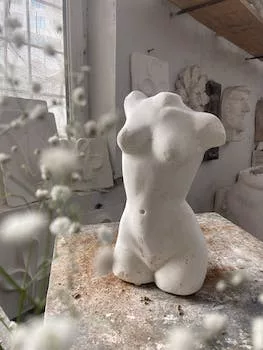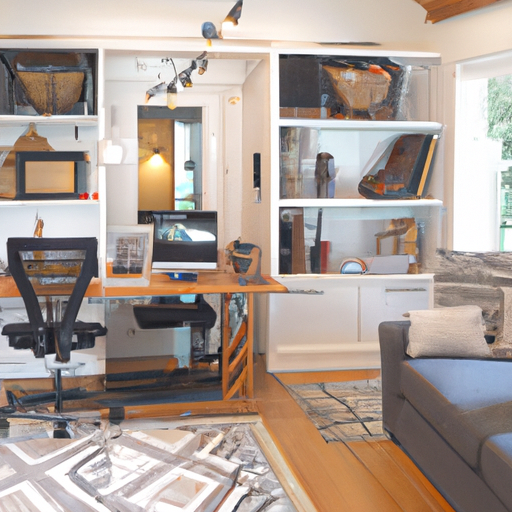Balancing Functionality and Aesthetics in Modern Craft Room Complexes
The importance of design in creating a modern complex that’s perfect for a craft room cannot be overstated. A well-designed craft room complex not only provides a functional and efficient space for artists and hobbyists to work on their projects, but also creates an aesthetically pleasing environment that fosters creativity and inspiration. Balancing functionality and aesthetics in modern craft room complexes is essential to ensure that these spaces cater to the diverse needs of their users while also contributing to the overall appeal of the complex.
One of the key aspects of designing a modern craft room complex is ensuring that the space is adaptable and versatile. This means that the layout and organization of the room should be able to accommodate a wide range of activities and projects, from sewing and knitting to painting and woodworking. This can be achieved by incorporating modular furniture and storage solutions that can be easily rearranged or repurposed as needed. Additionally, the inclusion of adjustable work surfaces and ergonomic seating options can help to create a comfortable and efficient workspace for users of all ages and abilities.
Another important consideration in the design of a modern craft room complex is the integration of technology. In today’s digital age, many artists and hobbyists rely on various devices and software applications to assist them in their creative pursuits. As such, it is essential that the craft room complex is equipped with the necessary infrastructure to support these technologies, such as ample power outlets, high-speed internet access, and wireless charging stations. Furthermore, the incorporation of smart lighting systems and climate control features can help to create an optimal working environment that can be easily adjusted to suit the preferences of individual users.
In addition to functionality, aesthetics play a crucial role in the design of a modern craft room complex. A visually appealing space can inspire creativity and encourage users to spend more time working on their projects. To achieve this, designers should consider incorporating a variety of textures, colors, and materials into the space to create a dynamic and engaging environment. This can include the use of natural materials such as wood and stone, as well as bold patterns and vibrant colors that reflect the creative spirit of the craft room.
Lighting is another essential element in the design of a modern craft room complex. Proper lighting not only ensures that users can see their work clearly, but also contributes to the overall ambiance of the space. Designers should consider incorporating a mix of ambient, task, and accent lighting to create a layered and visually interesting lighting scheme. This can include the use of natural light through large windows or skylights, as well as the strategic placement of artificial light sources such as pendant lights, floor lamps, and under-cabinet lighting.
Finally, the design of a modern craft room complex should prioritize sustainability and eco-friendliness. This can be achieved through the use of energy-efficient appliances and lighting fixtures, as well as the incorporation of sustainable materials and finishes. Additionally, designers should consider incorporating elements of biophilic design, such as the inclusion of indoor plants and green walls, to create a connection between the indoor space and the natural world.
In conclusion, the design of a modern craft room complex requires a careful balance of functionality and aesthetics to create a space that is both efficient and inspiring. By considering factors such as adaptability, technology integration, visual appeal, lighting, and sustainability, designers can create a craft room complex that meets the diverse needs of its users while also contributing to the overall appeal of the complex.
Integrating Technology and Design for Enhanced Creativity in Craft Spaces

The importance of design in creating a modern complex that’s perfect for a craft room cannot be overstated. A well-designed craft space not only enhances the overall aesthetic appeal of the room but also significantly contributes to the productivity and creativity of the individuals using the space. Integrating technology and design in craft spaces is essential for fostering an environment that encourages innovation and artistic expression.
One of the key aspects of designing a modern craft room is ensuring that the space is both functional and visually appealing. This can be achieved by incorporating elements such as ample storage, ergonomic furniture, and appropriate lighting. Storage solutions should be designed to accommodate various types of materials and tools, making it easy for users to access and organize their supplies. Ergonomic furniture, such as adjustable chairs and tables, can help prevent physical strain and discomfort during long crafting sessions. Additionally, proper lighting is crucial for creating a comfortable and inviting atmosphere, as well as for ensuring that users can see their work clearly and accurately.
Another important consideration when designing a craft room is the integration of technology. In today’s digital age, many artists and crafters rely on various technological tools and devices to enhance their creative process. For example, digital drawing tablets, sewing machines with computerized functions, and 3D printers are just a few examples of the types of technology that can be incorporated into a modern craft space. By seamlessly integrating these tools into the design of the room, users can enjoy a more efficient and streamlined creative process.
Furthermore, the use of smart technology can greatly enhance the functionality and convenience of a craft room. For instance, smart lighting systems can be programmed to adjust the brightness and color temperature of the room based on the time of day or the specific task being performed. This can help reduce eye strain and create a more comfortable environment for users. Similarly, smart storage solutions can be designed to automatically track inventory levels and send notifications when supplies are running low, ensuring that users never run out of essential materials.
In addition to incorporating technology, a well-designed craft room should also promote collaboration and social interaction. This can be achieved by creating designated areas for group projects and providing comfortable seating for guests. By fostering a sense of community and encouraging users to share ideas and techniques, a craft room can become a hub of creativity and inspiration.
Finally, the design of a modern craft room should be flexible and adaptable to accommodate the ever-evolving needs of its users. This can be achieved by incorporating modular furniture and storage solutions that can be easily reconfigured or expanded as needed. Additionally, the use of durable and easy-to-clean materials, such as laminate countertops and washable fabrics, can help ensure that the space remains functional and attractive for years to come.
In conclusion, the integration of technology and design in craft spaces is essential for creating a modern complex that is perfect for a craft room. By considering factors such as functionality, aesthetics, technology, collaboration, and adaptability, designers can create a space that not only meets the needs of its users but also inspires and nurtures their creativity. As the world becomes increasingly digital and interconnected, it is more important than ever to ensure that our physical spaces are designed to support and enhance our creative pursuits.
The Role of Ergonomics and Spatial Planning in Crafting the Ideal Craft Room Complex
The importance of design in creating a modern complex that’s perfect for a craft room cannot be overstated. A well-designed craft room complex not only enhances the overall aesthetic appeal of the space but also significantly contributes to the functionality and efficiency of the room. In this regard, ergonomics and spatial planning play a crucial role in crafting the ideal craft room complex. By carefully considering these aspects, designers can create a space that is both visually appealing and highly functional, ensuring that users can work comfortably and efficiently in their craft room.
Ergonomics is the study of designing equipment and devices that fit the human body, its movements, and its cognitive abilities. In the context of a craft room complex, ergonomics is essential in ensuring that the space is comfortable and safe for users. This involves considering factors such as the height of work surfaces, the placement of tools and equipment, and the arrangement of furniture to minimize strain on the body and reduce the risk of injury. By incorporating ergonomic principles into the design of a craft room complex, designers can create a space that promotes good posture, reduces fatigue, and allows users to work more efficiently.
One of the key aspects of ergonomics in a craft room complex is the height of work surfaces. Ideally, work surfaces should be adjustable to accommodate users of different heights and to allow for various tasks that may require sitting or standing. Adjustable work surfaces can help prevent back, neck, and shoulder strain, as well as reduce the risk of developing repetitive strain injuries. Additionally, the placement of tools and equipment should be carefully considered to ensure that they are within easy reach and do not require excessive bending or stretching to access.
Spatial planning is another critical aspect of designing a modern craft room complex. This involves the arrangement of furniture, equipment, and storage solutions in a way that maximizes the available space and promotes efficient workflow. A well-planned craft room complex should have designated areas for different tasks, such as cutting, sewing, and painting, as well as ample storage for materials and tools. By creating a logical layout, designers can help users navigate the space more easily and complete their tasks more efficiently.
In addition to promoting efficiency, spatial planning can also contribute to the overall aesthetic appeal of a craft room complex. By carefully selecting furniture and storage solutions that complement the overall design theme, designers can create a cohesive and visually appealing space. Moreover, incorporating elements such as natural light, plants, and artwork can further enhance the ambiance of the room and create a more inviting and inspiring environment for users.
In conclusion, the importance of design in creating a modern craft room complex cannot be overstated. By incorporating ergonomic principles and effective spatial planning, designers can create a space that is both visually appealing and highly functional. A well-designed craft room complex not only enhances the overall aesthetic appeal of the space but also significantly contributes to the functionality and efficiency of the room. Ultimately, a thoughtfully designed craft room complex can provide users with a comfortable, efficient, and inspiring environment in which to pursue their creative endeavors.
Q&A
Question 1: Why is design important in creating a modern complex for a craft room?
Answer 1: Design is important in creating a modern complex for a craft room because it ensures optimal functionality, maximizes available space, and creates an inspiring and comfortable environment for users to engage in their creative pursuits.
Question 2: How can design elements contribute to the overall efficiency and productivity of a craft room?
Answer 2: Design elements such as proper lighting, ergonomic workstations, and well-organized storage solutions can contribute to the overall efficiency and productivity of a craft room by reducing physical strain, minimizing distractions, and allowing users to easily access and manage their tools and materials.
Question 3: What are some key design considerations when planning a modern complex for a craft room?
Answer 3: Key design considerations when planning a modern complex for a craft room include ensuring adequate natural and artificial lighting, providing ample and flexible workspaces, incorporating efficient storage solutions, selecting durable and easy-to-clean materials, and creating a visually appealing and inspiring atmosphere that fosters creativity.
Conclusion
In conclusion, the importance of design in creating a modern complex for a craft room cannot be overstated. A well-designed space not only enhances functionality and efficiency but also fosters creativity and inspiration. By incorporating elements such as ample storage, ergonomic workstations, and versatile lighting, a thoughtfully designed craft room can significantly improve the overall crafting experience and contribute to the success of artistic endeavors.


